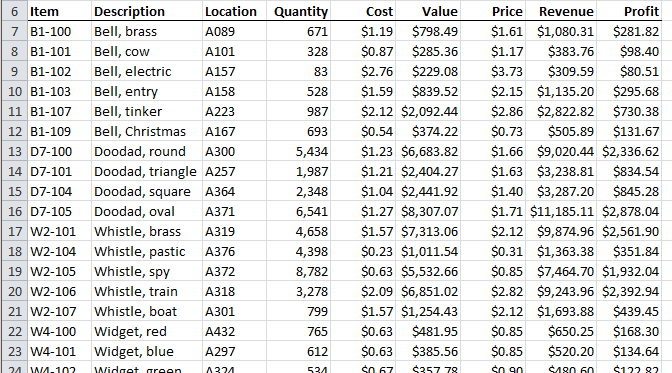Please Note: This article is written for users of the following Microsoft Excel versions: 2007, 2010, 2013, 2016, 2019, Excel in Microsoft 365, and 2021. If you are using an earlier version (Excel 2003 or earlier), this tip may not work for you. For a version of this tip written specifically for earlier versions of Excel, click here: Performing Calculations while Filtering.
Written by Allen Wyatt (last updated September 17, 2022)
This tip applies to Excel 2007, 2010, 2013, 2016, 2019, Excel in Microsoft 365, and 2021
Filtering a list means displaying only a part of it. You provide the criteria you want used, and then Excel displays only those list records that match the criteria. Filtering is especially useful if you have a large list and you want to work with only a subset of the records in the list. Other ExcelTips have described different ways you can create and apply filters to your worksheets.
When you are using the advanced filtering capabilities of Excel you can perform calculations during the filtering process. For instance, let's assume you have a large inventory list in a worksheet, and you want to filter the list to show only those records that were in a particular department and that have a higher-than-average profit. The inventory is contained in starts at cell A6 (with your column headings) and the profit is listed in column I. (See Figure 1.)

Figure 1. Example inventory data in a worksheet.
You can use an advanced filter by setting up your criteria in other cells. For instance, let's say that your criteria are in the cell range A1:B2. (See Figure 2.)

Figure 2. Example filtering criteria.
Row 1 contains the names of the columns in your datasheet that you want compared in the filtering. Thus, cell A1 contains the name "Item" because you want the value under it (in cell A2) to be used in filtering the data table based on the contents of the Item column. There is no column name in cell B1 because you aren't keying the criteria on a column's contents; you want it based on a calculation. Here are the formulas you should place in cells A2 and B2:
| Cell | Formula | |
|---|---|---|
| A2 | ="W2*" | |
| B2 | =I7>AVERAGE($I$7:$I$42) |
This example provides for a text comparison related to the department number (in cell A2) and a comparison of the profit for the item (I7, which is a relative cell reference and therefore changes for each comparison) to the average profit for the entire inventory ($I$7:$I$42, which is an absolute reference and therefore does not change for each comparison). If an absolute reference had not been used for the AVERAGE function, the wrong results would have been generated by the filtering.
When you apply an advanced filter to your inventory data (as described in other ExcelTips), the result, using the above criteria, is that only those records that had a profit greater than the average (the average in I7:I42) were displayed.
ExcelTips is your source for cost-effective Microsoft Excel training. This tip (11630) applies to Microsoft Excel 2007, 2010, 2013, 2016, 2019, Excel in Microsoft 365, and 2021. You can find a version of this tip for the older menu interface of Excel here: Performing Calculations while Filtering.

Program Successfully in Excel! John Walkenbach's name is synonymous with excellence in deciphering complex technical topics. With this comprehensive guide, "Mr. Spreadsheet" shows how to maximize your Excel experience using professional spreadsheet application development tips from his own personal bookshelf. Check out Excel 2013 Power Programming with VBA today!
The filtering tools provided in Excel make it easy to filter a data list so that only certain rows are displayed. What if ...
Discover MoreWhen you filter data in a worksheet, Excel also allows you to apply sorting orders to that data. Here is a ...
Discover MoreFiltering your data is a very power capability in Excel. What, however, are the limits on how many rows you can filter? ...
Discover MoreFREE SERVICE: Get tips like this every week in ExcelTips, a free productivity newsletter. Enter your address and click "Subscribe."
2022-09-17 11:10:09
J. Woolley
Consider use of AutoFIlter instead.
See https://excelribbon.tips.net/T006612_Using_AutoFiltering.html
Got a version of Excel that uses the ribbon interface (Excel 2007 or later)? This site is for you! If you use an earlier version of Excel, visit our ExcelTips site focusing on the menu interface.
FREE SERVICE: Get tips like this every week in ExcelTips, a free productivity newsletter. Enter your address and click "Subscribe."
Copyright © 2024 Sharon Parq Associates, Inc.
Comments